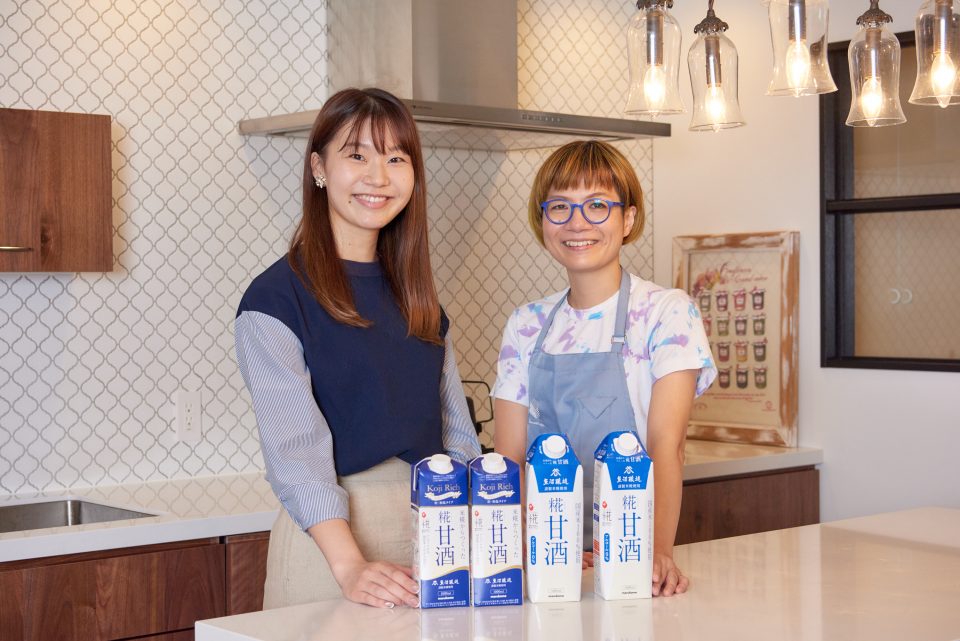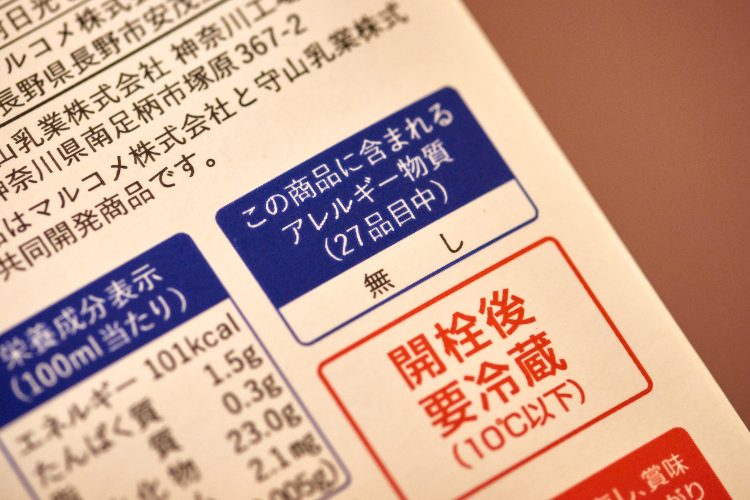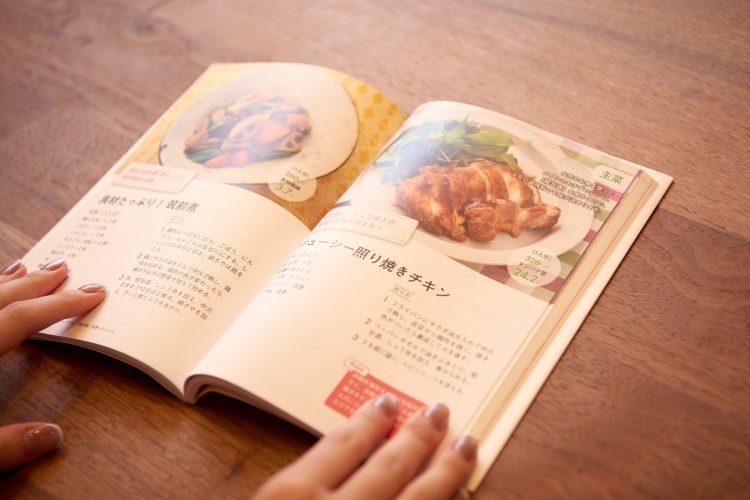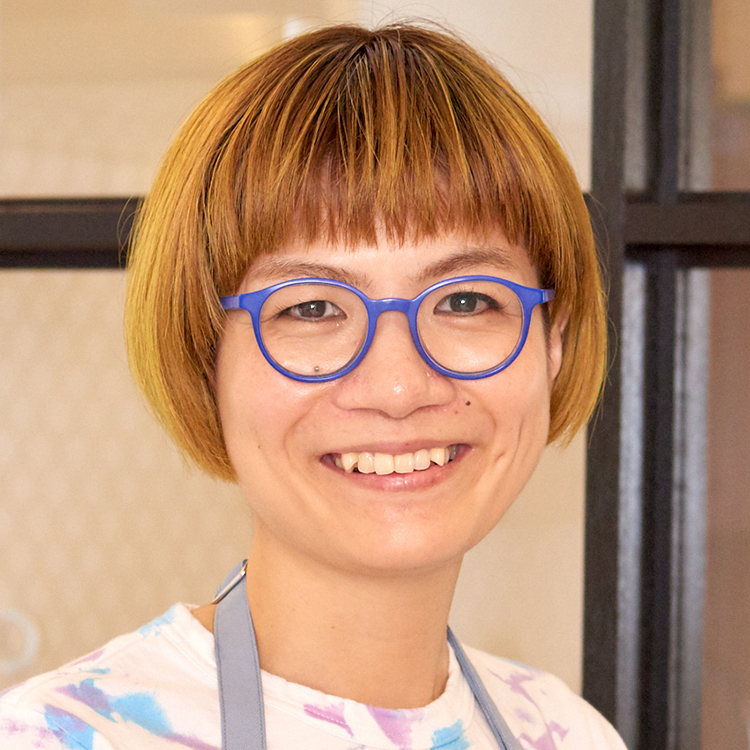Koji Amazake: A Natural Sweetener Instead of Sugar
Oct 22,2020
Koji Amazake: A Natural Sweetener Instead of Sugar
Oct 22,2020


Food coordinator and culinary expert Amako Yoko has a finger in many pies, including developing menus and preparing food for TV shows. In fact, many of her recipes are featured on the Marukome website. In July 2020, she came out with a new book coauthored with Professor Maehashi Kenji of Tokyo University of Agriculture. This has created quite a buzz, because it’s chock-full of recipes that are not only easy to make and delicious to eat, but also healthy and nutritious. It’s title: Now Here’s an Idea: Use Koji Amazake Instead of Sugar.
Koji amazake is a sweet fermented beverage made with rice koji (malt). Tawa Saori of Marukome Co., Ltd.’s Corporate Communications Department asked Yoko about the attractions of koji amazake and the advantages of using it in the kitchen.
TAWA:You’ve recently published a book, Now Here’s an Idea: Use Koji Amazake Instead of Sugar. What impressions did you originally have of koji amazake?
AMAKO:I’d drunk koji amazake on occasion, but to be honest, it didn’t make much of an impression on me. But then one day I tried Marukome’s Plus Koji Koji-Amazake soymilk blend in connection with my job, and I was bowled over by how good it tasted.
I kept drinking it after that, and by the third day I could tell my bowel movements were getting smoother. My staff, who drank it as well, all experienced the same. That was literally a gut-level reminder of the fact that koji amazake is a fermented beverage.

Food coordinator and culinary expert Amako Yoko
TAWA:Koji amazake has long been known as a rich source of nutrition. It’s so good for you, in fact, that it’s been nicknamed the IV you drink. It contains over 350 compounds, including vitamins, fiber, and oligosaccharides, not to mention glucose. What’s more, it’s deliciously sweet despite not being made with sugar, and it contains zero percent alcohol. Marukome has been selling Plus Koji Koji-Amazake since 2014, and the product kills two birds with one stone in that it’s both natural and good for you.
AMAKO:In addition, it contains no allergens. I think it’s really impressive that it can claim to be alcohol- and allergen-free right on the carton.

TAWA:Most people don’t think of koji amazake as something you can use in your cooking. For them it’s just a beverage. Have you been using it in the kitchen for long?
AMAKO:Well, ever since I started drinking it myself. I often make stewed and miso-based dishes at home, and one day it occurred to me that it might be worth trying koji amazake instead of white miso.
Being from the Kansai, I’m familiar with white miso being used to make zoni rice-cake soup at New Year’s. But it’s not that often that I use white miso in my everyday cooking. It has a short shelf life to boot, so I was wondering what to do. Then it struck me. “There’s something else I could use instead!” [Laughs]
TAWA:I’m glad you said that. We want people to use koji amazake as a fermented sweetener as well as drink it.
AMAKO:Using koji amazake instead of sugar as suggested in the book’s title enriches the taste of food. With sugar, the sweetness is too pronounced. I never realized that while I was using sugar, but after I started using koji amazake, I noticed that the sweetness was less pronounced. On the contrary, koji amazake brings out the flavor of the ingredients. To be honest, I was amazed to discover that sugar made everything so sweet.

TAWA:That’s especially true when making stewed dishes, right? I once ran out of koji amazake and had to use sugar instead, and it was like “Huh?” Once you get used to koji amazake, there’s no going back [laughs].
An incredible variety of recipes are featured in this book. They range from starch dishes to main dishes to side dishes to dressings to sauces to desserts. Is there any dish you’re particularly proud of?
AMAKO:Well, I can recommend them all [laughs]. But I guess the teriyaki chicken, in the sense that it’s easy to make even if you’re a novice. I think it’s the most obvious example of what using koji amazake in place of sugar is like. The compounds in koji amazake make meat moist and tender, so this is a surefire recipe for a tasty meal, even if you’re not much of a cook.

TAWA:Usually teriyaki is made with mirin and sake, but this recipe features just koji amazake and soy sauce, which is nice. One of the great things about your recipes is that they require so few seasonings. You can make them with whatever you have at home.
AMAKO:In this case, two parts koji amazake to one part soy sauce.
TAWA:Two to one, the golden ratio! That’s so easy to understand. Another thing: koji amazake tends to be associated with Japanese cuisine, but your recipes include a surprising number of Western- and Asian-style dishes as well.
AMAKO:Well, on that subject, one of the recipes that even amazed me was the Napolitan spaghetti, a pasta dish created in Japan. Usually Napolitan spaghetti is made with ketchup, but not in this case. The recipe uses tomatoes to which koji amazake is added. The idea was to use the koji amazake more for its umami than its sweetness. The complex umami possessed by koji amazake gives the tomatoes a ketchup-like taste.
Even I was skeptical, though, when I first thought up the recipe. I intended to add ketchup if the taste was inadequate, but when I actually tried making it, I was amazed. “Wow!” I thought. “Koji amazake is all you need!”
TAWA:Koji amazake goes well with anything acidic, right? Our Plus Koji Koji-Amazake comes in yuzu flavor as well, and it’s got a nice mellow taste. The amazake takes the edge off the citrus.
AMAKO:Exactly! That’s also true of tom yam kung, which is featured in the book. Many Asian dishes are made with sugar, and using koji amazake instead both sweetens and mellow the flavor. It really is killing two birds with one stone.
When making a dressing or dip, all you have to do is mix it in. Dissolving sugar can actually be stressful sometimes. Another advantage of koji amazake is that you don’t need to do that, because it’s in liquid form.
TAWA:What did you most want to get across to readers by writing the book?
AMAKO:That the easiest way to stay healthy is through your regular diet, I suppose. Simply substituting koji amazake for sugar boosts nutritional value and leads to better health. Now I can’t think of another flavoring that does that. The book, I believe, gives readers a better appreciation of the intricacies of koji amazake. It isn’t just something you drink, you know. Professor Maehashi’s commentary is enlightening as well.
TAWA:Koji amazake is becoming more widely known, but I imagine that many people still don’t know how to make use of it in their cooking. Your book gives them one more reason to do so.

AMAKO:The more I use koji amazake in my cooking, the more enamored of it I become. The thought of using koji amazake in cooking probably surprises some people. Like, “Huh?!” In fact, even my own family was initially reluctant to eat dishes made with it, maybe because of their stereotypes about it.
But then I put it in something without telling them, and when they’d finished eating, I said, “Actually, that was made with koji amazake.” Well, they just couldn’t believe it [laughs]. Seeing their reaction convinced me that koji amazake could be widely used in cooking [laughs].
TAWA:Giving people culinary surprises is part and parcel of your philosophy, is it not?
AMAKO: Well, when I think up a recipe, I try to make it easy for anyone to prepare, of course, but I also hope the dish will surprise and delight when served with a “Ta-da!”.Since eating is something we all do anyway, I want to concoct fun dishes that get people talking. Using koji amazake in a dish is, I figure, a great conversation starter in its own right.

Food coordinator and culinary expert Amako Yoko graduated from the Tsuji Culinary Institute in Abeno, Osaka. She then worked at a pastry store and served as an assistant to an authority on food before striking out on her own. She appears frequently on TV and in magazines and other media. She is leader of the amacoven team, which develops menus, prepares food for TV shows, does food photography, and provides catering services.